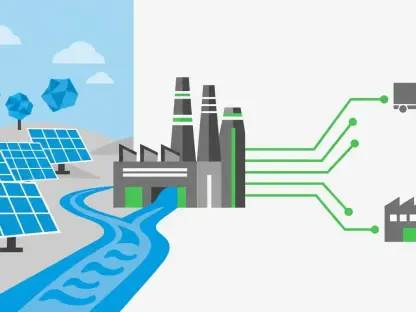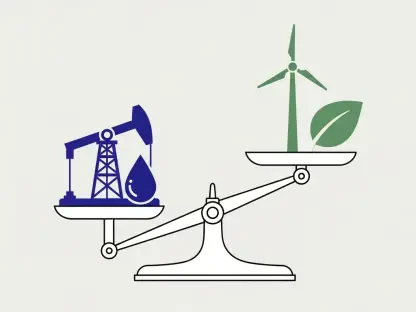Amid the rapid rise of artificial intelligence (AI) and the corresponding surge in energy consumption, the question arises whether geothermal energy could provide a sustainable solution to meet future energy needs. According to an independent research body, the Rhodium Group, geothermal energy has the potential to economically satisfy up to 64% of the expected growth in energy demand by the early 2030s, contingent on certain baseline assumptions. This possibility could be a game-changer for energy sustainability, provided that advanced geothermal technology becomes commercially viable at scale.
Potential and Challenges of Geothermal Energy
Technological Advancements and Obstacles
The concept of harnessing geothermal energy is not new, but what sets the current scenario apart is the advanced technology being developed to tap into the Earth’s core heat from almost any location. With breakthroughs borrowed from sectors such as nuclear fusion and fracking, the feasibility of geothermal energy is increasing. However, the technology is still in its nascent stages, and significant barriers remain. High costs and risks associated with subsurface exploration are major hurdles that must be overcome to make geothermal energy commercially viable at scale.
Investment stands as another critical challenge. Since 2020, investments in geothermal projects have been limited, with the total investment barely surpassing $700 million. This financial shortfall is primarily due to the high risks and long lead times associated with geothermal ventures. Yet, the support of Big Tech companies such as Meta and Alphabet, which are increasingly backing geothermal startups, is helping to alleviate some of these historic investment bottlenecks. Regions like Texas stand out as particularly favorable due to abundant geothermal resources and strong regulatory support, making them prime locations for this kind of energy development.
Current Contribution and Future Prospects
Although geothermal energy currently accounts for only a small fraction of global renewable energy—about 0.5%—its potential is far from insignificant. In regions with favorable geologic conditions, such as Iceland, geothermal energy already plays a significant role in electricity generation. Applying similar technologies to areas with less natural geologic activity could drastically expand geothermal’s footprint. Continued technological innovation and financial investment will be key to overcoming the practical limitations that have so far confined geothermal energy to a niche role in the renewable energy landscape.
The Rhodium Group’s report suggests that geothermal could satisfy all anticipated demand growth for data centers in 13 of the 15 largest U.S. markets and at least 15% in 20 of the 28 national markets. This prediction underscores the enormous potential of geothermal energy if it can be scaled commercially. The accelerated growth in AI and data centers underscores the urgency of finding reliable, scalable energy solutions, and geothermal could be a viable contender.
Rising Demand and the Role of Data Centers
The AI Explosion
The proliferation of artificial intelligence has led to a rapid increase in energy demand, particularly from data centers. In the United States alone, data centers have doubled their electricity consumption from 2% of the national total in 2020 to 4.5% by the current year. This rapid growth is driven largely by the exponential expansion of AI applications, which require vast computational power and, consequently, significant amounts of electricity. As AI continues to permeate more industries and applications, the strain on energy grids will only intensify, presenting daunting challenges to meeting climate goals.
Addressing this rising demand with traditional fossil fuels would exacerbate climate concerns, making the search for sustainable alternatives even more critical. Geothermal energy, with its potential for providing clean baseload power, could be an ideal solution for supporting the growing needs of data centers while adhering to climate targets. However, this will require a concerted effort from both the private and public sectors to overcome existing challenges and scale up geothermal projects effectively.
Opportunities in the U.S. Market
The western United States presents significant opportunities for geothermal energy development due to its favorable geologic conditions. But the potential is not limited to just this region. Central and eastern markets, such as Washington, DC/Northern Virginia, Chicago, Columbus, OH, and Memphis, also show promise. The key to realizing these opportunities lies in the willingness of data center operators to pay a premium for green energy, the sustainability of tax credits, and supportive policies at all governmental levels.
Geothermal energy’s scalability would provide a stable, sustainable energy source capable of addressing the significant energy needs of the AI revolution. While the upfront costs and technical challenges are high, the long-term benefits of integrating such a robust energy source could be substantial. This shift towards embracing geothermal energy could play a pivotal role in ensuring energy security and sustainability in the face of rapidly growing demand from AI and data centers.
A Path Forward for Geothermal Energy
Policy and Investment Support
The successful commercialization of geothermal energy hinges on various factors. One of the most critical is supportive policies at all governmental levels. These policies could include extending tax credits for renewable energy projects, streamlining the permitting process, and providing grants or low-interest loans specifically for geothermal developments. Such measures have the potential to reduce the financial risks and make geothermal projects more appealing to private investors and developers.
Public awareness and acceptance also play a crucial role in advancing geothermal energy. Educating stakeholders, including policymakers, investors, and the general public, about the benefits and potential of geothermal energy can create a more favorable environment for its development. Demonstrating successful case studies and pilot projects could go a long way in building confidence and attracting more interest and investment in this renewable energy source.
Long-Term Prospect
The future of geothermal energy looks promising, especially as new technologies mature and additional investments flow into the sector. Collaborations between the public and private sectors will be essential to fully realize geothermal’s potential. With the support of technological innovations and favorable policies, geothermal could become a significant player in meeting the growing energy demand driven by AI and other burgeoning sectors. Overcoming the current technical and financial barriers will require sustained effort and collaboration, but the potential rewards make this pursuit worthwhile.
Increased adoption of geothermal energy could significantly impact the energy landscape, providing a reliable, clean, and sustainable power source. As the world continues to grapple with rising energy demands and the urgent need to mitigate climate change, geothermal energy presents an attractive, viable solution. If the necessary support and investments are secured, the widespread adoption of geothermal energy could become a reality within the next decade.
Geothermal Energy Could Meet Future Energy Needs
Amid the rapid rise of artificial intelligence (AI) and its corresponding surge in energy consumption, a critical question emerges: Can geothermal energy provide a sustainable solution to future energy needs? According to research by the independent body Rhodium Group, geothermal energy holds significant promise. This renewable source has the potential to economically meet up to 64% of the predicted increase in energy demand by the early 2030s, assuming specific baseline conditions are met. This finding highlights the tremendous potential geothermal energy has in addressing our sustainability challenges, especially as the world seeks greener energy sources. For this potential to be realized, advanced geothermal technology must become commercially viable at a large scale. If this happens, geothermal energy could be a pivotal element in the sustainable energy landscape, offering a reliable and eco-friendly alternative as we progress into the future.









